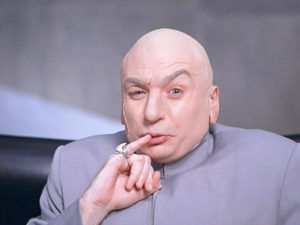I imagine most of us have thought how very nice it would be to find a hidden treasure or a sack of money with no strings attached. When I was a kid on vacation, I used to search the beach at Padre Island for gold and Spanish coins that might have washed up from some ancient shipwreck. I looked for buried treasures and lost mines in the hills and caves around Fredericksburg and Mason. I memorized the maps of lost treasures in J. Frank Dobie’s books, “Apache Gold and Yaqui Silver” and in “Coronado’s Children,” and I wondered how many of those long secreted bullion stashes and lost mines were yet to be found. Robert Lewis Stevenson’s “Treasure Island” sent my mind wandering into caves filled with gold and piles of pirate booty.
One person I know who had actually found a buried treasure was Elfino Menchaca, who lived about seven miles south of San Antonio. He said he was returning home from the cotton field one afternoon, when he noticed a broken Mason jar lid, partially buried in the fencerow right at the gate to his house. Something about the jar caught his interest and he hit at it with his hoe. When he pulled the hoe back he saw there were several silver coins in its wake. He picked them up and saw that they were old American silver dollars. With his pocketknife and his hoe, Elfino dug the broken jar from the fencerow along with a total of 870 silver dollars.
He filled his pockets with the coins and used his knotted shirtsleeve for a bolsa for the rest. He hurried in the house to tell his wife the exciting news. Of course, his wife, Gabby, wanted to see where he had found them. They returned to the gate and Elfino pointed to the hole. Together they scratched the ground to see if they had missed any loose coins. They found six more jars filled with silver dollars. It was obvious the jars had been buried a long time, as the lids were all corroded and rusted out.
I don’t remember the total amount they found, but Elfino and his wife were able to purchase the 74 acres where they live with the proceeds of their discovery. Still, when I an traveling through that country, I find my eyes scanning the fence rows near gates for a trace of a Mason jar lid hiding more treasure.
My friend, Ron Hall, who I’d worked with in Tucson, told me on his 16th birthday he and his older brother, Jack, had gone camping near the Kurtchner caverns, east of Tucson before they had been taken over by the state of Arizona. He said they were camped in a rock shelter that had a crack in the back wall about 8-inches wide. When they shined their flashlights in the crack they could see it connected to a small room about 10-feet across and 7-feet high. They could feel cool air coming out of the crack that indicated another opening to the room.
They could see what appeared to be a ’73 Winchester rifle leaning against the wall right below them. The rifle had a broken stock that had been repaired with wire. Next to the rifle was a metal box about 8-inch by 12-inch and a jacket that looked pretty worn out. He said, “We were pretty sure it was a money box of some sort but we could never find the other entrance. I still know where it is and when I get a chance I plan to go back to see what was in that box.” Another successful treasure hunter is my friend, James Stotts, who lives near Llano. He found nine lost Spanish silver mines on his ranch. (I’ll save that story for another time).
Another friend who discovered — not one but two — sunken treasures is Jack Dyer, a treasure hunter and privateer, as it says on his business card.
Several years ago, Jack found a Spanish treasure ship, loaded with silver coins and bars off of Guam that was recovered. Later, he located a Spanish cargo of gold coins and bullion a short piece from shore in South America. Jack is looking for a partner to fund this recovery, if any readers are interested.
Another friend, Darrell, just returned from the Philippines where he located three caches of gold buried by the Japanese during WWII.
In the last several months, there have been reports in the news of various individuals finding sacks filled with large amounts of cash. One was a homeless man who found $5,000 or so. He returned it, and he was rewarded.
Another was a manager at a Goodwill store who found $47,000 in some clothing that had been donated. He returned the money to the grateful donor, and he was rewarded. Still another was a young Rabbi who found a paper bag with $96,000 in a used desk he had purchased on eBay. He also returned the money, and he received a reward.
While discussing ethics with my six-year-old granddaughter, I asked her what she would do if she found a million dollars. She considered carefully for a long time then said, “Well, Grandfather, if it belonged to a poor person, I would give it back.”
